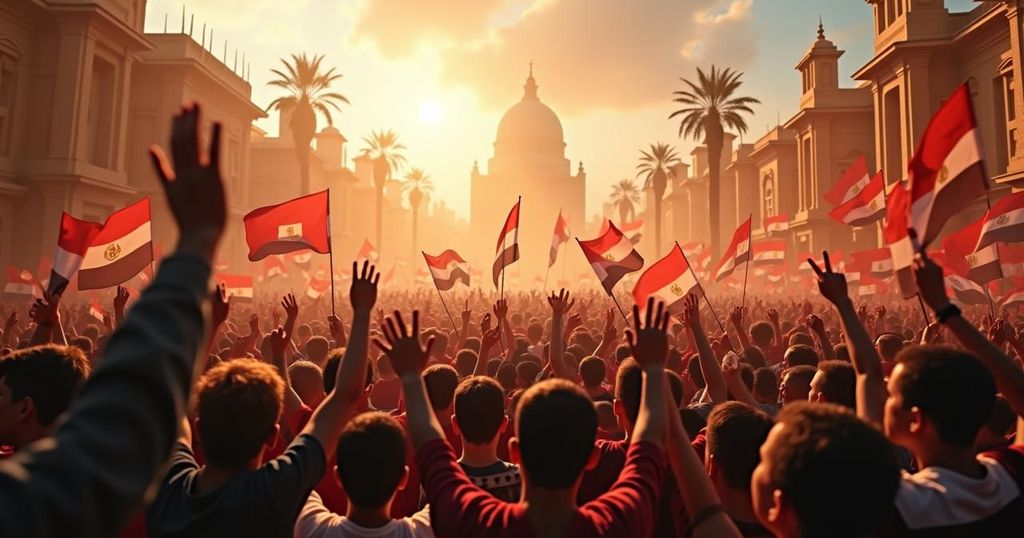Rise and Decline of the Muslim Brotherhood in Egypt

The Muslim Brotherhood, after initially supporting the January 2011 protests against Mubarak, established the Freedom and Justice Party, achieving significant electoral success and gaining the presidency with Mohammed Morsi. However, public dissatisfaction led to Morsi’s ouster by the military in July 2013, resulting in a violent crackdown on the Brotherhood and its designation as a terrorist organization, marking a harsh return to oppressive policies.
In January 2011, a youth-led protest movement emerged in Egypt, challenging the authoritarian regime of President Hosni Mubarak. The Muslim Brotherhood, initially reluctant, eventually endorsed the movement and encouraged its members to participate in the protests, which culminated in Mubarak’s resignation in February. Following Mubarak’s ousting, the Brotherhood adopted a political strategy that would refrain from seeking a legislative majority or a presidential candidate. This strategy changed in April 2011 when Abdel-Moneim Abul-Fotouh, a senior member, announced his intention to run for the presidency, leading to his expulsion from the organization. The establishment of the Freedom and Justice Party in late April 2011 marked a significant political step for the Brotherhood as it sought official recognition to participate in the electoral process. The party, rooted in Islamic principles yet claiming to be inclusive, gained considerable electoral success, capturing approximately 47 percent of the seats in the People’s Assembly elections between November 2011 and January 2012. The Brotherhood’s achievements continued as they played a dominant role in drafting the new constitution. However, tensions escalated when Khairat al-Shater, initially the Brotherhood’s candidate for president, was disqualified in 2012, prompting the nomination of Mohammed Morsi, who eventually won the presidency. Morsi’s tenure faced mounting opposition, culminating in widespread protests demanding his resignation by June 2013. The military intervened, ousting Morsi and reinstating a transitional government. This action sparked protests among Muslim Brotherhood supporters, leading to violent clashes with security forces and severe reprisals against the Brotherhood, including accusations of terrorism. Following Morsi’s removal, a systemic crackdown ensued, resulting in mass arrests of Brotherhood members and leaders, media suppression, and the designation of the organization as a terrorist entity by the Egyptian government. The escalating violence and government repressions harkened back to the oppressive tactics reminiscent of the Mubarak era, further complicating the political landscape in Egypt.
The Muslim Brotherhood, founded in 1928, is a significant political and social organization in Egypt with roots in Islamist ideology. The group gained traction during various periods of political oppression, advocating for social and political reform based on Islamic principles. It played a pivotal role during the Arab Spring of 2011, which led to the overthrow of Mubarak and opened a new chapter for political Islam in Egypt. However, the subsequent rise of the Brotherhood’s power led to significant backlash from secularists and the military, reshaping Egypt’s political dynamics and leading to severe crackdowns on the organization once they were ousted from power.
The trajectory of the Muslim Brotherhood in Egypt illustrates a complex interplay between popular uprisings and political maneuvering. The organization’s initial rise to power following the Arab Spring was characterized by electoral successes and attempts to forge a new political identity grounded in Islamic principles. Yet, this was met with substantial opposition, resulting in a military intervention and a harsh crackdown that dismantled much of its political infrastructure. The aftermath highlights the challenges of reconciling democratic aspirations with deep-seated political divisions in Egyptian society.
Original Source: www.britannica.com







